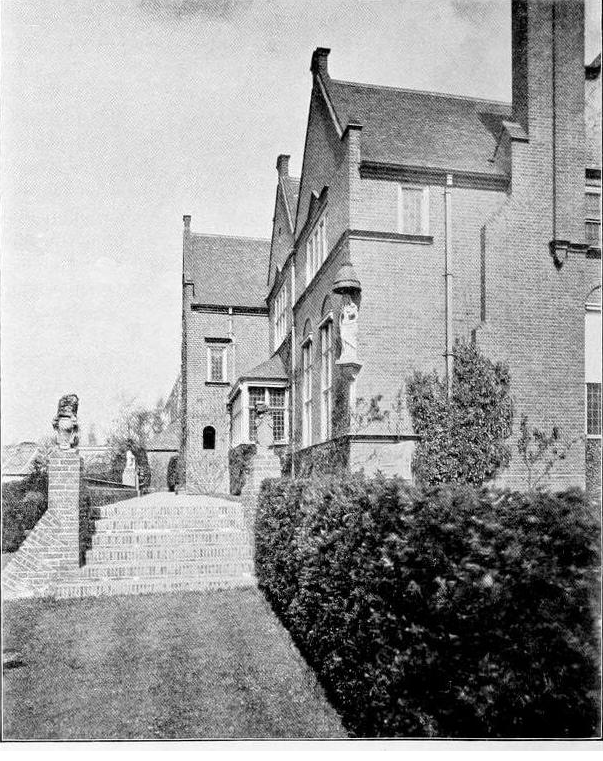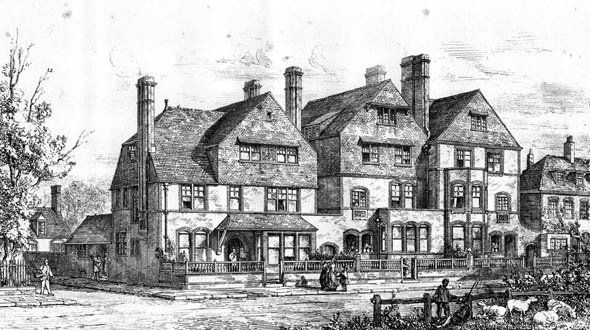1876 Peto entered into a partnership with Streatham resident Ernest George (1839 – 1922) an established architect and artist.
Together they designed a number of buildings in Streatham including Ernest George's "Redroofs" overlooking Streatham Common and Hambly Mansions
The partnership of Harold Ainsworth Peto (1854-1933) and Sir Ernest George (1839-1922) lasted from 1876-1892. According to Robin Whalley, "The firm became one of the most successful in London during the 1880s"; in fact, Hilary Grainger says, they enjoyed "spectacular success." Grainger explains: "Their superbly conceived designs represent the extreme point of late Victorian individualism, and were inspired by old Flemish and German town houses, sketched and painted in watercolour so stylishly and evocatively by George in his tours of Europe."
Peto resigned from the partnership for health reasons, and also because he wanted to live in the countryside. He became better known as an influential garden designer. George went on, with other partners, to design some large country houses and some important London buildings, including the Royal Academy of Music in Marylebone (1910-11). He was the president of RIBA from 1908-10. According to Grainger, he was "[e]ssentially a picturesque architect." The most important of his later partners was Alfred Bowman Yeates (1867-1944), who had been his Chief Assistant, and whom he took into partnership in 1892 (an arrangement that lasted until 1935).
Writing in 1950, when taste was only just turning in favour of the Victorians, Reginald Turnor says of the various houses by Peto and George, Norman Shaw and Stevenson in and around Cadogan Square: "Relentless vermilion caked with London soot — or even uncaked — overwhelms even a good design" (102). But these houses have aged well and are in great demand now. — Jacquelne Banerjee, PhD, Contributing Editor, Victorian Web
(The Victorian Web)
Images
Coffee Tavern
Redroofs
Hambly Mansions




